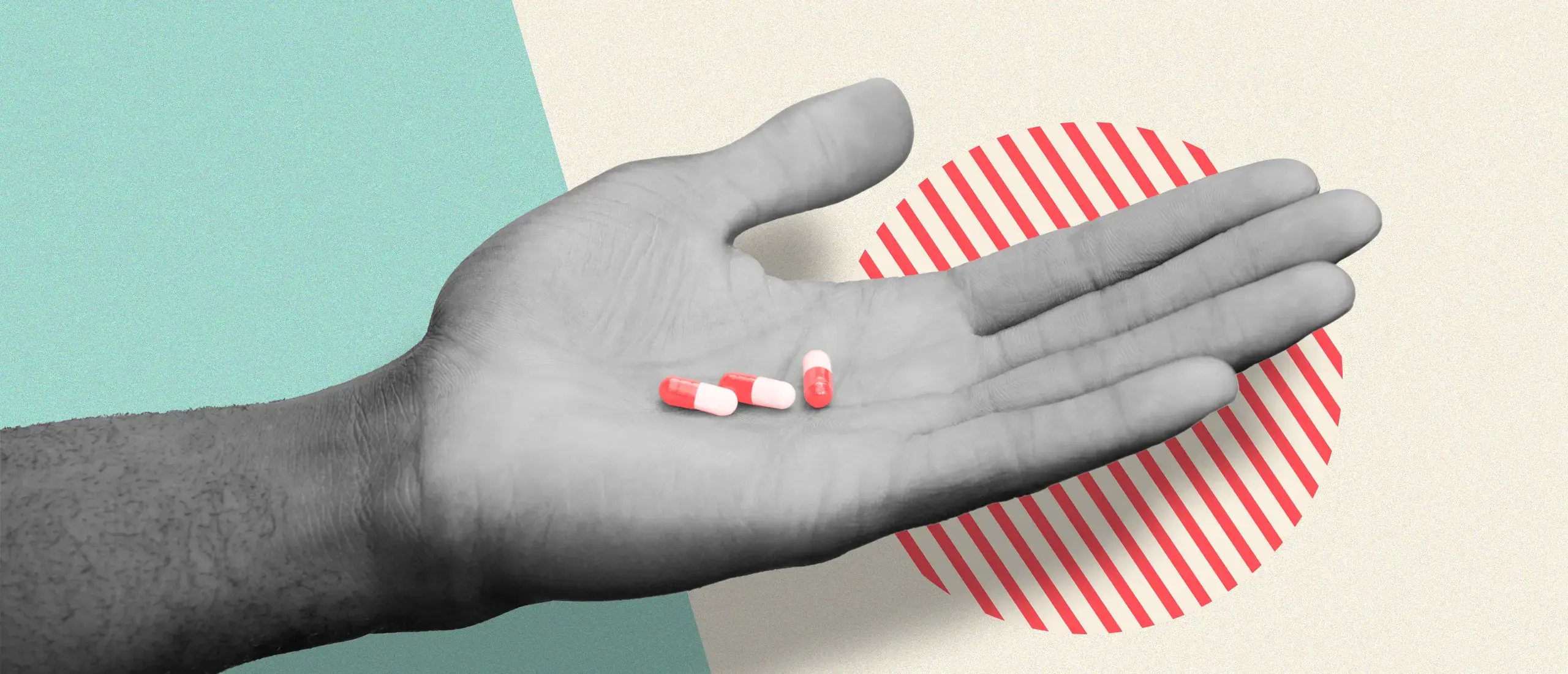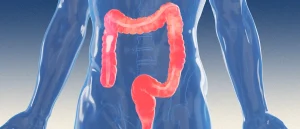What Is NMN—and How Does It Work, Exactly?
- By Jennifer Chesak
- Fact-checked by Mike Fazioli
- December 29, 2023
30-Second Takeaway
- NMN is a precursor to NAD+ and has become a hot anti-aging supplement over the years.
- NAD+ levels dramatically decline as you age, but NMN supplementation may be able to boost your NAD+ levels and, essentially, slow aging.
- Unfortunately, the FDA recently banned NMN as a dietary supplement. It’s now being researched as potential new drug.
Nicotinamide mononucleotide, more commonly called NMN, has become a buzzy supplement in recent years, thanks to medicine 3.0-focused researchers like David Sinclair, Ph.D. But what exactly is NMN, and do you need to add it to your wellness regime?
As you enter middle age, you may begin to notice subtle signs of aging, such as more fine lines and creakier joints. You might also experience big changes, too—such as the slowing of your metabolism and decreased personal bests on the track or in the gym.
While getting older is a privilege, it still comes with its own host of challenges. The good news? You can now take actions to help offset or delay some of those changes. That’s where anti-aging supplements like NMN come into play.
Some people have even dubbed NMN as a “fountain of youth”—a drink many people would like to order, right? But what does it do, and why is everyone talking about it, including the U.S. Food and Drug Administration (FDA)?
In 2022, the agency stated “NMN may not be marketed as or in a dietary supplement or as a food.” The reasoning? It’s because “NMN has been authorized for investigation as a new drug.” (1). Many NMN supplements are still on the market, but the legality of those are now in question.
Here’s everything you need to know about NMN, including why it’s been a hot longevity supplement.
What Is NMN and What Does It Do?
NMN is a precursor to nicotinamide adenine dinucleotide, or NAD+, which is present in your cells and plays a crucial role in how they make energy (2). A precursor simply means that your body makes something from something else. In this case, NMN and other NAD+ precursors turn into NAD+ in the body. NMN is just one type of NAD+ precursor. Others include various forms of vitamin B3, aka niacin, as well as the amino acid tryptophan.
“If you look at something in the body,” says Anastasia Jandes, MD, PharmD, IMFCP, “almost all things have a biologically active form versus an inert form. The conversion process of niacin itself to its coenzyme form has many intermediaries, and NMN is one of those intermediaries.” A coenzyme is a compound that creates the active portion of an enzyme.
By middle age, your NAD+ levels decline by 50 percent compared to those you had in your youth (3). The current theory is that by boosting your body’s NAD+ supply you may be able to slow the hallmarks of aging. This includes inflammageing, or chronic inflammation that comes about with age (4).
About the Expert
Anastasia Jandes, M.D., is a functional medicine doctor who is at the forefront of research on inflammation, chronic stress, sleep, hormone health, and aging.
What does NAD+ do?
Before we get into the specifics on what NMN does, here’s a quick rundown of what NAD+ is—and why it’s important. By this point, you likely know that calories are energy, which is why after you eat you often feel replenished and able to carry out daily tasks. But let’s deconstruct this logic a bit: In order to use that energy, your cells must first turn that food into adenosine triphosphate, or ATP.
ATP is the universal “energy currency” of your cells (5). NAD+ plays an important role in that conversion process. That’s why when NAD+ declines as you age, you become more prone to mitochondrial and metabolic dysfunction, insulin resistance, and more. You also become more susceptible to the diseases that often go along with these metabolic health issues, including type 2 diabetes (2).
What Are the Benefits of Taking NMN?
Researchers are looking into whether NMN can boost NAD+ in the human body. Right now, there’s evidence that NMN supplementation is beneficial for boosting NAD+ in animal models. Some preclinical evidence has suggested that NMN supplementation elicits similar benefits in humans, as well. More large-scale clinical trials are needed, however (6). Still, research has pointed to a few areas in the body that NMN could help improve (7):
- Brain health
- Cardiovascular health
- Liver function
- Muscle health and function
- Pancreatic function
To date, findings from human studies suggest NMN supplementation may enhance aerobic capacity, boost insulin sensitivity in muscles, and help with sleep quality. And a recent, small-scale study demonstrated that taking NMN supplementation for 12 weeks enhanced NAD+ metabolism (6).
Let’s take a deeper look at the benefits that have been researched.
NMN may help you boost your fitness levels
There are age-group categories in races and other types of physical competitions for specific reasons: As you age, you lose approximately 5 to 10 percent of your aerobic fitness each decade, with that percentage increasing over time, especially after age 40. This loss in aerobic capacity can hinder your ability to maintain your current athletic performance, weight, and over time, your overall physical functioning. In your senior years, this loss can contribute to a decline in functional independence (8). That’s why exploring ways to mitigate this loss is critical for having the opportunity to enjoy a better quality of life in your later years.
NMN may increase your insulin sensitivity
Insulin resistance occurs when the body stops using insulin effectively. When glucose from the foods you eat enters the bloodstream, your blood sugar levels rise. Increased blood sugar levels signals the pancreas to secrete insulin. Then, insulin helps cells in the body uptake that glucose for energy. That’s where NAD+ comes in and helps convert that energy to the universal currency of ATP.
However, if you repeatedly have spikes in blood sugar after eating too many carbohydrates at once, then insulin levels will remain elevated, and cells then become resistant to insulin signaling. Pancreatic cells will work even harder to produce more insulin, leaving them overtaxed and susceptible to damage.
Ultimately, these processes can mean your blood sugar levels remain even higher than what’s healthy, leading to organ and tissue damage in the long term. Insulin resistance is a hallmark of conditions like prediabetes, type 2 diabetes, and in many cases, obesity (9).
Insulin resistance is also an indicator of mitochondrial dysfunction (10). Mitochondria are cells’ powerhouse, so mitochondrial dysfunction can lead to diseases in nearly every part of the body (11).
Unfortunately, people tend to become a bit more insulin resistant as they age (12). So the more you can increase insulin sensitivity and keep that insulin signaling in cells robust, the better chance you have of staving off related diseases, maintaining a healthy weight, reducing cravings for high-fat and sugary foods, and more (13).
NMN may improve your cardiovascular health
Finally, insulin resistance and other issues of metabolic dysfunction can contribute to a decline in vascular function, and therefore promote cardiovascular disease. However, one study shows that NMN supplementation helps improve blood flow and reduce arterial stiffening in middle-aged participants with an above-average body mass index (BMI) and high blood glucose levels (6).
NMN may increase your healthspan
NMN is a hot topic in longevity, for both lifespan and healthspan. While lifespan encompasses the years you’re alive, healthspan is reflective of the years when you’re in generally good health. Since NMN may help combat some of the hallmarks of aging and help mitigate metabolic disease processes, it may prolong those years when you feel relatively good.
What Is the Best Way to Take NMN?
NMN as a supplement is generally taken orally and is quickly absorbed and converted to NAD+ (3).
However, you can also obtain NMN from foods that naturally contain it. Some options include avocado, edamame, mushrooms, broccoli, cabbage, tomato, beef, and shrimp (14). In fact, Jandes recommends eating an array of fruits and veggies, and focusing on a Mediterranean diet which is rich in B vitamins, over supplementation.
“Everything within the vegetable and fruit world has a phytonutrient spectrum and the spectrum is associated with the color of the micronutrients,” she says. “So if you want to make sure you’re getting all the micronutrients that you need in the phytonutrient spectrum, you need to make sure you’re getting seven to eight servings of fruits and veggies per day.”
Greens, specifically, are an excellent way to get your B3 intake. “The iceberg wedge is great and all,” Jandes says, “but make sure you’re getting a mixture of leafy greens.” Cheeses and yogurt (with no added sugar) are also beneficial.
What Are the Side Effects of NMN?
In small-scale studies on human participants, researchers report no significant side effects of NMN (15). However, experts, including Jandes, say more research is needed to avoid over-supplementation. Some cancerous tumors may thrive on NAD+ in the body, particularly as you age, she explains.
References
1. Regulations.gov. (2022). NDI 1259 – B-Nicotinamide Mononucleotide (NMN) from Inner Mongolia Kingdomway Pharmaceutical Limited.
2. Xiao W, et al. (2018). NAD(H) and NADP(H) redox couples and cellular energy metabolism.
3. Shade C. (2018). The Science Behind NMN–a stable, reliable NAD+ activator and anti-aging molecule.
4. Covarrubius AJ, et al. (2021). NAD+ metabolism and its roles in cellular processes during ageing.
5. Pinna S, et al. (2022). A prebiotic basis for ATP as the universal energy currency.
6. Katayoshi T, Uehata S, Nakashima N, et al. (2023). Nicotinamide adenine dinucleotide metabolism and arterial stiffness after long-term nicotinamide mononucleotide supplementation: a randomized, double-blind, placebo-controlled trial.
7. Tokushima University. Recent research into nicotinamide mononucleotide and ageing.
8. Fleg J, Morrel C, Bos AG, et al. (2005). Accelerated longitudinal decline of aerobic capacity in healthy older adults.
9. Lawal Y, Bello F, Kaoje YS. (2020). Prediabetes deserves more attention: A review.
10. Gonzalez-Franquesa A and Patti ME. (2017). Insulin resistance and mitochondrial dysfunction.
11. Medline Plus (2016). Mitochondrial Diseases.
12. Evans JL and Goldfine ID. (2013). Aging and insulin resistance: Just say iNOS.
13. Chao AM, Jastreboff AM, White MA (2017). Stress, cortisol, and other appetite-related hormones: Prospective prediction of 6-month changes in food cravings and weight.
14. Poddar SK, Sifat AS, Haque S, et al. (2019). Nicotinamide mononucleotide: Exploration of diverse therapeutic applications of a potential molecule.
15. Igarashi M, Nakagawa-Nagahama Y, Miura M, et al. (2022). Chronic nicotinamide mononucleotide supplementation elevates blood nicotinamide adenine dinucleotide levels and alters muscle function in healthy older men.












